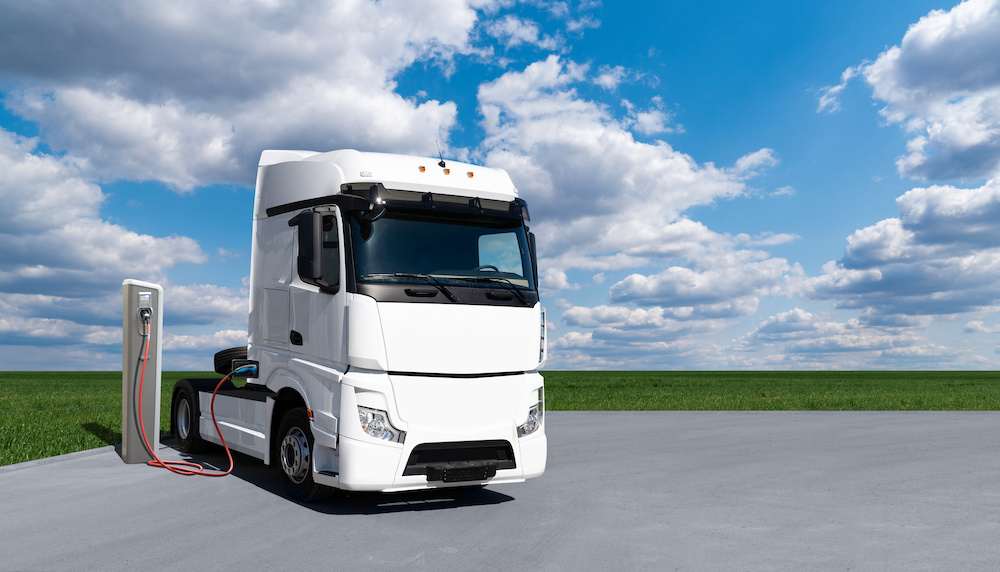 Professor David Cebon Director, Centre for Sustainable Road Freight
Professor David Cebon Director, Centre for Sustainable Road Freight

Over the past couple of months, I have been heavily involved with a team assembling a proposal for funding from the Innovate UK Zero Emission Road Freight Demonstrator (ZERFD) trial. This is a large-scale demonstration project, funded by the UK Government’s Department for Transport that “will support government’s commitment to end sales of all new, non-zero emission HGVs by 2040 and enable continued cross border freight.
The trial is focussed on heavy goods vehicles (HGVs) in the 40-44t GVW range. The ZERFD programme has three strands, one for battery electric vehicles (BEVs), one for hydrogen fuel cell electric vehicles (FCEVs) and one for combined BEV and FCEV operations. Several hundred ‘zero emission’ vehicles will be run by the successful project teams during the period 2023 to 2030.
The fleet operators in the trial are required to purchase their BEVs or FCEVs over the next two years (before April 2025). Consequently, for the proposal preparation they had to get hard quotations from OEMs for supply of zero emissions tractor units. This was an important financial watershed for the truck industry. The OEMs had to provide quotes that they were willing to stand by… not just to talk about what might be possible in an ideal future. Being involved in many discussions with the fleet operators during the bid development process, I was able to get a good idea of the quoted prices across the OEMs.
So how much are OEMs currently quoting for ‘zero emissions’ tractor units? For BEVs with 500-600kWh batteries, the asking prices are currently in the range £250k-£350k: a bit more than double the cost of a diesel unit. For equivalent hydrogen fuel cell electric vehicles, the price range is double again, at £500k-£700k. Of course, we can expect these prices to come down in future as demand rises and manufacture scales-up.
Why are hydrogen fuel cell trucks double the price of battery electric trucks? The answer is simple. Both technologies require an electric drive train, Li-ion battery and inverter. But a FCEV also requires a fuel cell, hydrogen storage tanks and hydrogen delivery equipment, which are much more complex and costly than the larger battery capacity needed by a BEV.
So, what about the future operating costs of BEVs vs FCEVs? Well, of course, we don’t know exactly, but we can make some pretty accurate predictions, based on the energy requirements of the two technologies.

Figure 1 (above) shows an analysis of the energy efficiencies of three different options for powering ‘zero emission’ heavy goods vehicles. The three branches all start with 100 kWh of renewable electricity (eg from a wind turbine or PV cell) and they show the various energy conversions needed for the energy to reach the wheels of the vehicle. The left hand branch (FCEV) shows that converting the electricity into hydrogen via electrolysis, compressing and storing the hydrogen and then running it through a fuel cell to generate electricity to drive an electric motor has an overall efficiency of around 23%. That means that 77% of the energy is wasted as low-grade heat through the energy conversion chain in a FCEV. In the middle branch (BEV), it can be seen that around 69 kWh out of the original 100kWh reaches the wheels of a BEV. Consequently, the FCEV requires 69/23 = 3 times more renewable electricity to drive it the same distance as a BEV. That factor of 3 means that it will cost at least 3 times more to provide the energy for a FCEV powered by electrolytic hydrogen than it will cost to power a BEV directly on electricity. There is no getting around this, (other than through government subsidy, of course). Even if electricity becomes much cheaper in the future ‘renewables-powered’ world, it will always cost 3 times more for the energy to run a FCEV than an equivalent BEV. And of course, the additional complex components on FCEVs will undoubtedly mean that they are more expensive to maintain than BEVs. So we conclude that FCEVs will likely require about double the CAPEX and at least triple the OPEX of BEVs into the foreseeable future.
Given this stark difference in costs, the relevant question for fleet operators is not: ‘Which energy source should I purchase?, rather, the important question is: “’Can BEVs do the same logistics work as diesel vehicles?”. Because, if they can, there is no way that anyone would purchase a hydrogen-powered lorry!
Over the past few years, the Centre for Sustainable Road Freight (SRF) has been studying battery-electric logistics in order to answer this question. Our approach has been to collect a large amount of logistics data (origins, destinations, payloads, times of day, etc) for a variety of UK fleets, all around the country. We have used accurate (carefully validated) simulation models of electric lorries to predict the electric charging requirements and the battery sizes needed to undertake tens of thousands of different logistics journeys using BEVs instead of diesel lorries. Importantly, we haven’t just simulated individual journeys. We have focussed on simulating ‘a day in the life’ of each BEV: accounting for the time spent between journeys (when the vehicles may be able to charge) as well as during them. Our aim was to establish whether the existing logistics tasks could be completed, with minimal time penalties, by
BEVs with fast chargers located at truck stops, warehouses and depots. We also investigated use of an electric road system (ERS) with overhead catenary cables to provide electricity to vehicles in-motion.
Without going into the details (some of which are available in this paper) we were not able to find any case where a BEV with a large battery (600-800kWh) and suitable charging infrastructure couldn’t do the current logistics tasks. In other words, our models indicate that essentially all current road haulage in the UK could be performed by a fleet of battery electric lorries with suitable charging infrastructure.
Use of an ERS would provide further benefits over the ‘big battery’ solution. Battery sizes for ERS lorries are much smaller (typically 150kWh) and vehicles never have to stop to charge their batteries – so there are no logistics time penalties due to charging. That can be a big advantage for operations where tractor units turn around immediately at warehouses (ie don’t have time to charge for 30mins). The small, lightweight batteries are a big advantage in cases where vehicle payloads are weight-limited.
ERS vehicles also have lower energy consumption (see the right-hand branch of Figure 1), lower carbon emissions and a significantly lower Total Cost of Ownership (TCO) than big battery EVs, even accounting for the cost of the infrastructure. Finally, our financial models indicate that the efficiency gains from electrification should be sufficient to pay the additional costs of the ERS infrastructure and consequently that government subsidies should not be necessary for electric trucking.
My conclusion from all of this is that the future road haulage system in the UK will be electric and not powered by hydrogen. Fleet operators will ‘vote with their cheque books.’ They won’t buy a FCEV that costs twice as much as a BEV to purchase and three times as much to run… when a BEV will do the logistics work they need to do.
For more information about the work of the Centre for Sustainable Road Freight (SRF), visit: https://www.csrf.ac.uk/